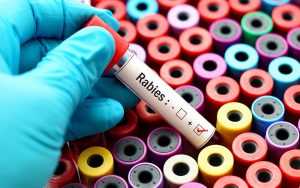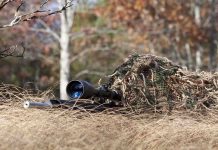
Hundreds of unsuspecting American families may have been exposed to rabies at a cherished national park lodge, raising urgent concerns about government accountability and public safety standards in federally managed spaces.
Story Snapshot
- Health officials are alerting guests from 38 states and seven countries after bats infested rooms at Jackson Lake Lodge in Grand Teton National Park.
- Hundreds may require costly rabies treatment due to potential exposure, with officials admitting bat bites can go undetected.
- The incident highlights failures in wildlife management and oversight in a major U.S. park, risking both public health and economic stability.
- Park authorities and the lodge closed affected rooms but face scrutiny over delayed response and safety protocols.
Mass Rabies Exposure at a National Park: What Happened?
Between May 5 and July 27, 2025, hundreds of visitors at the iconic Jackson Lake Lodge in Grand Teton National Park may have been exposed to rabies after a colony of bats was discovered in the attic above eight guest rooms. Health officials have since launched a sweeping notification campaign, contacting guests from 38 states and seven countries. The exposure was only recognized after multiple guests reported direct encounters with bats, a scenario that is highly unusual even in wildlife-rich national parks.
Park authorities closed the affected rooms immediately after the bat colony was found, but the timeline shows a delay between initial guest complaints and decisive action. This lapse has resulted in a large-scale public health alert, with hundreds now advised to consider post-exposure rabies treatment. The risk is compounded by the fact that bat bites and scratches can be almost impossible to detect, making the true extent of exposure difficult to determine. The urgency of the response underscores a broader pattern of government mismanagement and highlights the dangers of bureaucratic delays in federally controlled spaces.
Public Health Response and Stakeholder Roles
The Wyoming Department of Health leads the mass notification effort, working alongside the Teton County Public Health Department, the Grand Teton Lodge Company, the National Park Service, and federal health agencies. Their priority is to prevent any rabies cases by recommending immediate post-exposure prophylaxis for at-risk individuals. The lodge operator, motivated by liability concerns and the need to preserve its reputation, is providing guest records to authorities. The National Park Service, responsible for ensuring visitor safety, is now under scrutiny for how wildlife risks are managed in popular tourist settings. The Centers for Disease Control and Prevention has endorsed the precautionary approach, given rabies’ nearly 100% fatality rate if left untreated.
Despite the rapid mobilization, many conservative observers will recognize familiar issues: government agencies often react instead of proactively preventing crises, leaving American families to bear the consequences. The involvement of multiple agencies and the need for cross-jurisdictional coordination further complicate the response, exposing cracks in federal oversight and risk management at national landmarks.
Economic and Social Fallout: Who Pays the Price?
The immediate impact includes the high cost of rabies prophylaxis, lost revenue from closed lodge rooms, and potential liability claims. The tourism industry in Wyoming faces reputational damage, as news of the exposure spreads far beyond state lines. Anxiety among affected guests and the broader public is palpable, with many questioning the adequacy of safety protocols in federally managed parks. The long-term fallout could include stricter wildlife management measures, new guest safety requirements, and heightened scrutiny of federal agencies’ ability to protect visitors. This incident may serve as a wake-up call for conservatives who have long warned about the dangers of bloated government and neglected infrastructure in public lands.
Meanwhile, the affected community—families, lodge staff, and local businesses—must now navigate medical uncertainty and potential financial hardship. The event also raises questions about the government’s obligation to uphold basic standards of safety and transparency in spaces entrusted to its care.
Expert and Community Perspectives
Leading health officials, including Dr. Alexia Harrist of Wyoming and Travis Riddell of Teton County, emphasize the rare nature of mass exposure but insist that caution is warranted due to the stealthy nature of bat bites. The CDC’s endorsement of broad preventive treatment highlights the gravity of rabies as a public health threat. Industry experts agree that the scale of this incident is virtually unprecedented, putting a spotlight on systemic failures in wildlife and facility management. For park visitors and conservative families alike, the episode reinforces the importance of vigilance, individual responsibility, and demanding better stewardship from government agencies overseeing national treasures.
Tourists warned of rabies risk after bats infest cabins at national park https://t.co/RgHiUzGoyY
— Book2themoon (@Book2MAGA) August 19, 2025
While officials continue to investigate and test bats from the lodge, the absence of positive rabies results so far does not eliminate risk—underscoring the enduring uncertainty that follows government missteps. The story is a stark reminder that American families must remain informed and vigilant when it comes to their safety, even in places that should be safest of all.
Sources:
Hundreds of Grand Teton National Park visitors may have been exposed to rabies
Grand Teton National Park rabies exposure: Cabins, guests in Wyoming
Wyoming health department tracking down more than 200 after mass rabies exposure
200 Teton Park visitors exposed to rabies
Some Grand Teton National Park visitors may have been exposed to rabies







